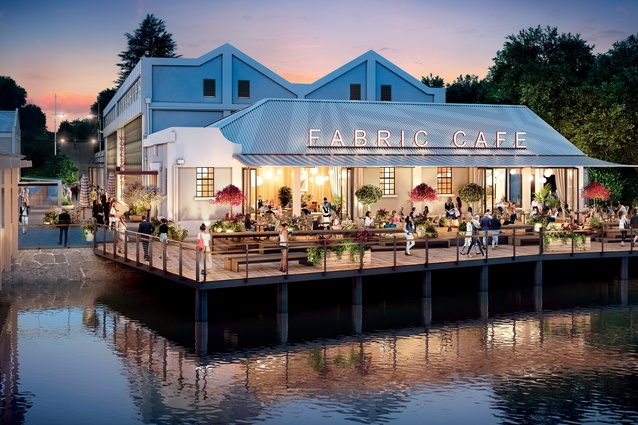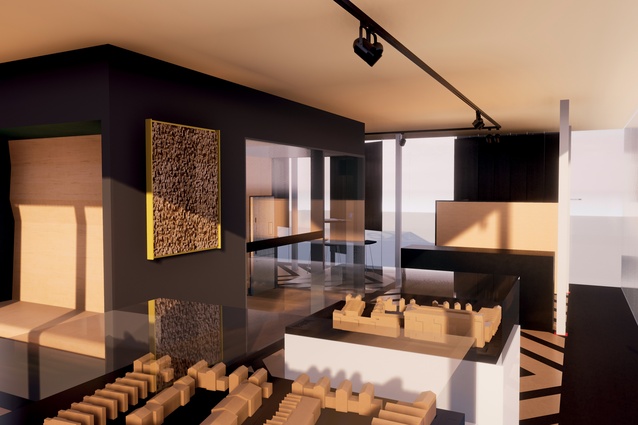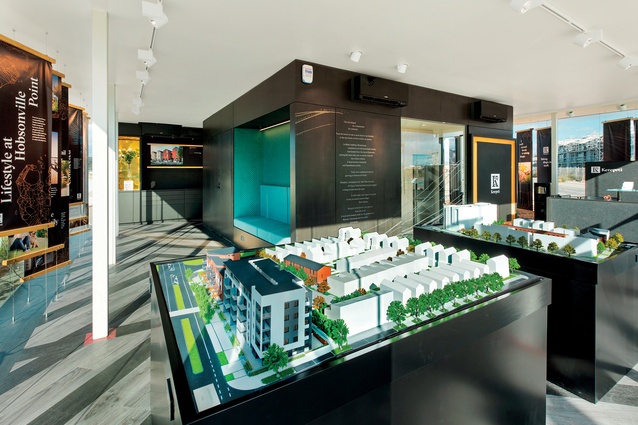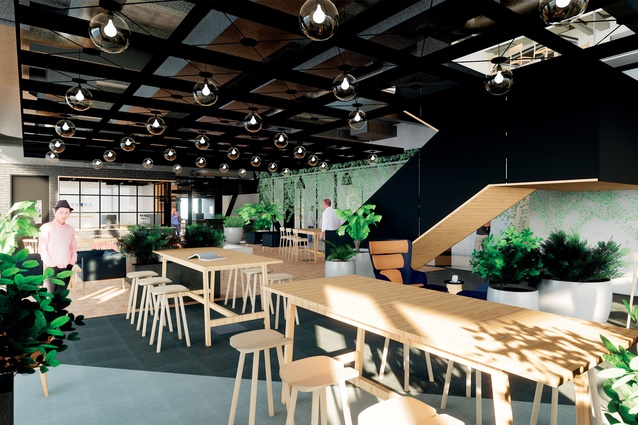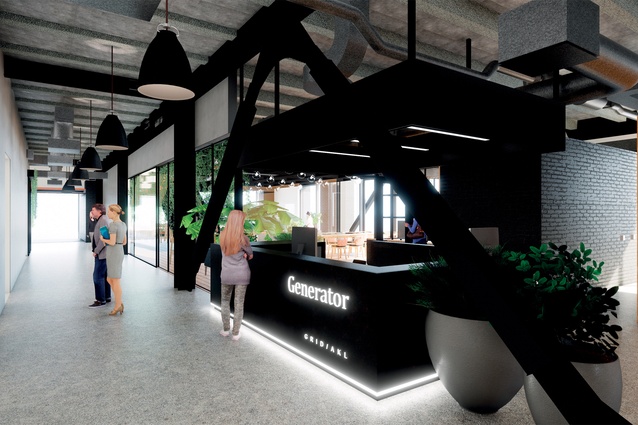Black mirrors: part two
In part two of Black Mirrors, Camille Khouri interviews some firms around the country which are using Cross Reality in their everyday work.
Q&A: Justin Wright of Assembly Architects, Queenstown
What system do you use?
Justin Wright (JW): We’re using Oculus Rift for the VR with Revit and the thing that connects them is Enscape, which is a prescription plug-in. With Enscape, you press the button and it takes the Revit model and all the materials and it’s live from the Revit model. If you change something in Revit, it will change it in Enscape, within the speed of the processing power.
When do you use it?
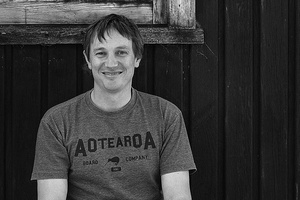
JW: We keep it live to develop design. We thought it might cost the client more but we’ve had three or four experiences where it has proven to be the opposite.
The client has come in with a list of changes and we’ve attempted to tell them why certain changes won’t benefit them – such as, “you won’t be able to see the view if you move that there” – and the client starts to be a little frustrated because they feel we’re not listening.
Then we’ve put the VR on them and, literally, we have gone from meetings that are starting to mean more work for us, because we have to investigate their options even though we feel they might be detrimental to the overall project, to being able to show them exactly what’s happening and to everyone being in agreeance.
In the day and age where you’re trying to convince people that smaller and higher quality is better than big, and they can’t always fathom scale from a plan, this is where you gain the experience of the volume.
They can see the furniture and the size and the space. It turns into a cost-saving measure because you don’t have clients pushing for more and more space. I am astounded by how much better it is for communicating with the client.
How does it help you design?
JW: I am not the kind of architect that can imagine something and then just draw it. I am always drawing and sketching through the process to see what’s going on. The feedback you get when you draw something and then test it out in this way, helps it evolve – drawing it, seeing it, critiquing it, drawing it and so on. We model heavily to start with so the VR is another tool for this process. It took a while to get the material library looking good so that it’s not just an ugly representation.
Do you use it in any other ways?
JW: You can step in and see parts where there is a good view and take a snapshot of that for a static presentation. You can change the light and see how it looks and make it look as good as possible. I see so much value in having everything live constantly. If a client comes in and asks for a change and you make that change, you know the whole drawing set will change with it.
Any pitfalls to using it?
JW: I started off drawing pen-to-paper on a drawing board and the surprise you would get when the client saw the place for the first time – really saw it and appreciated it – that used to be pretty cool. Now they really understand it a long time before it is built. They have this immersive experience. So, the romance is gone, I guess!
Are there some clients who don’t want to do it?
JW: Some feel vertigo or motion sickness and you have to coach them. Also, you have to hold their shoulders sometimes to move them into the space and some don’t like that. You also feel sick if you use it too much; you can’t just sit there all day and use it.
Is there something you would like to see develop in the technology?
JW: Being wireless, untethered, would be great.
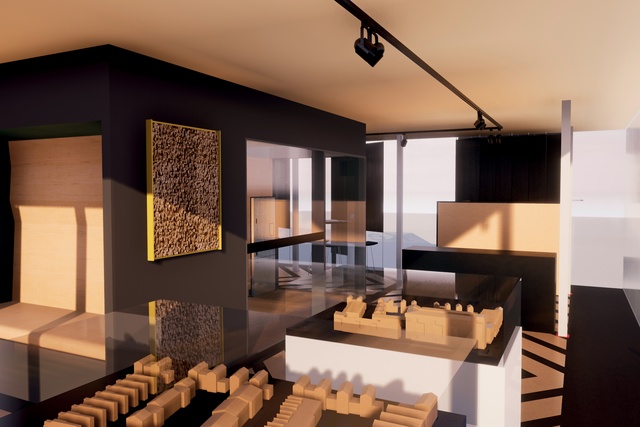
Q&A: Stephen Voyle, Managing Principal at Context Architects
Can you tell us about your VR set-up?
Stephen Voyle (SV): We have purpose-built virtual reality labs in Context’s Auckland and Christchurch studios. Architects, interior designers and clients (and the odd child in school holidays!) can be found in them at most times of the day.
Our virtual buildings team includes gamers, parametric and interior designers, architects, and BIM and CAD specialists. They look after the VR lab as part of enabling virtual building technology across the business. VR is embedded into our workflow. It’s just another design tool, albeit a very powerful, paradigm-changing tool!
How long has your firm been using this technology?
SV: We’ve been working in VR for about two years and are one of the earliest adopters in architecture in New Zealand. We use it every day to design interiors, buildings and even whole communities. It’s open to everyone to use.

What do you think are the benefits of using it?
SV: VR enables you to experience what an unbuilt space feels like. It removes the barrier of having to interpret a 2D plan, heightening the ability to experience a sensory, emotional response to a space.
Our architects create a design and, in minutes, can be in the lab walking around their space – experiencing how it looks but, crucially, how it feels. You can see exactly how light falls at a particular time of day, how it feels to sit at a table, look out of the window – exactly how it would be in the real world. It’s even more real when you add in film of the surrounds from our drone.
VR means we design better. We’re not constrained by having to get it ‘right’ first time – you can let your imagination go and see how that idea would feel in the real world without incurring real-world costs or risks. It creates better design as we test ideas.
As architects, we’re used to doing this intuitively – imagining unbuilt spaces – but, for clients, it immerses them in future built forms long before they exist. It removes risk, improves communication and increases excitement. You reach better decisions faster.
What improvements to the technology would you like to see?
SV: Occasionally, people feel self-conscious wearing headsets while they’re exploring a virtual space so we’re looking forward to lightweight, transparent headsets as the technology and cost improve.
We’ve already added surround sound for more realism, and additional kit so that designers can virtually guide clients around designs together. In time, we’ll also lose the sensors positioned around the lab. They track your movements, feeding them back into the system to make it feel realistic. In time, these sensors will be built in so you can explore ‘untethered’: i.e. not constrained within the walls of the lab and able to roam around at will.
Our ultimate goal is full augmented reality, where we can design collaboratively while we’re in the model – using our hands to add walls and windows that we’ve pulled from the internet – complete with all the data on price, materials, quantity and construction detailing. And we’re starting to design spaces that aren’t ever intended for the real world – virtual stores where the only design constraints are our imaginations.
Have you had feedback from clients about its use?
SV: Often, when clients come to our lab for the first time, it’s also the first time they’ve used VR. They are wowed by it – having the ability to engage with their space so realistically. It gives them certainty and confidence.
Will VR/AR replace the 3D model?
SV: An electronic 3D model is an enabler of VR and AR – they are just some of the formats that drop out of our set-up. As for physical models – we still find them useful. We have a couple of high-end 3D printers and often print buildings for clients to explore early on in a project while we’re still exploring massing options. Further down the line, it’s nice for clients to have the models on their desks while construction is under way.
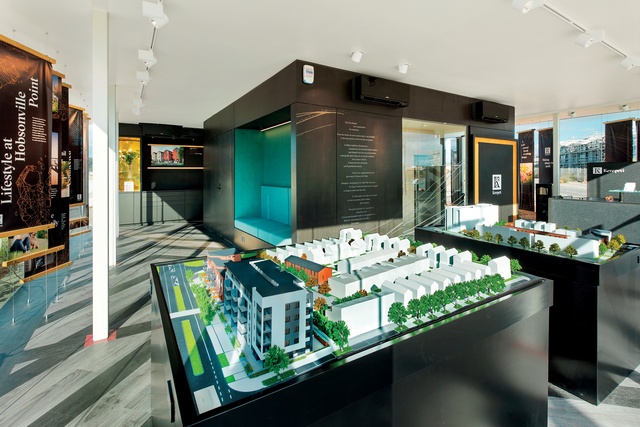
Q&A: Gareth Ross and Tim Johnson of Buildmedia
You have recently released Realspace, which allows potential buyers to walk through unbuilt architectural projects. Tell me a little about what it is and how that came about.
Tim Johnson (TJ): VR is one tool that allows people to experience a space but we felt we needed another interactive solution. Not everybody likes putting on the goggles and we’re pretty good at touchscreen presentations, so we thought we’d mix the two together.
Gareth Ross (GR): You can have the headset experience or a touchscreen experience where a sales agent can present and have a conversation.
Views out the windows are realistic, the interior detailing is incredible and you can even change the time of day to see how different light interacts with the space. Does it also allow the buyer to customise the space?
TJ: You can change materials individually, say, if there are light and dark colour options.
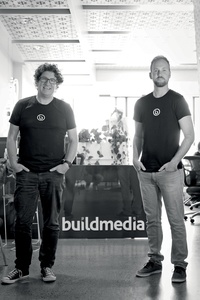
Is there much of a cost difference between 2D renders and a walk-through?
GR: Normally, with a project like [an apartment building], we would produce five or six renders: kitchen, living space, bedroom, en suite, etc. We’ve been able to crack it so the cost of producing a walk-through is about the same as the cost of producing those images.
Was there one specific technology that allowed the cost to even out?
TJ: In terms of the 3D world, a lot of technology has become more widely available over the last two years. We’ve been playing with real-time engines for around 10 years and it’s now hitting a quality that we would typically get with our still images and animations, so we felt the time was right to shake things up a little.
Is there much of a time difference between doing renders vs real time?
TJ: There is more time on the initial 3D model, just to ensure that the detail is throughout because you have that ability to walk around everywhere. But, then, the number of outputs you get increases: animations, still images, 360 images, touchscreen, possible VR.
What’s stopping every architectural firm in the world from having this technology already available to them?
GR: The interface is customised and we’ve gone through and programmed it. It’s taken us a couple of years to create a really good solution so there’s obviously that initial investment that would stop somebody. We have a set of features tailored towards this market and we’re actively adding more and more. That’s what makes real time different. We’ve created the way people interact with it.
Are there any industries other than the architecture and building industries where you think this might have potential?
TJ: Say, for instance, you have a new transport junction – this type of technology could very easily explain how that will work. You could actually jump into a car and experience the drive yourself.
What’s next, is there any new technology that you guys are keeping an eye on that’s exciting?
TJ: In terms of VR, there are going to be some pretty big developments this year or next, like increasing the resolution of the goggles so you don’t see the pixels. Also, removing the cable by just adding in a receiver on the head, would mean you’re free to move around a space and that opens up to a whole bunch of different options.
A big thing is that we’re continuing to develop this tool so if you’re walking around an apartment and if you want to see the difference between the fifth level and the 10th level, you can. Or, if you’re wanting to see different times of the day to observe what the sun does throughout the day, you can.
GR: We’re wanting to give more control to the likes of real estate agents to collect information from people who are viewing a property and be able to automatically email and manage people who are coming through. Effectively it could become a one-stop shop and you could put all of the drawings and marketing collateral into this one system. So it becomes your virtual showroom and that showroom can be duplicated and appear in multiple locations – it could be overseas or here in Auckland.
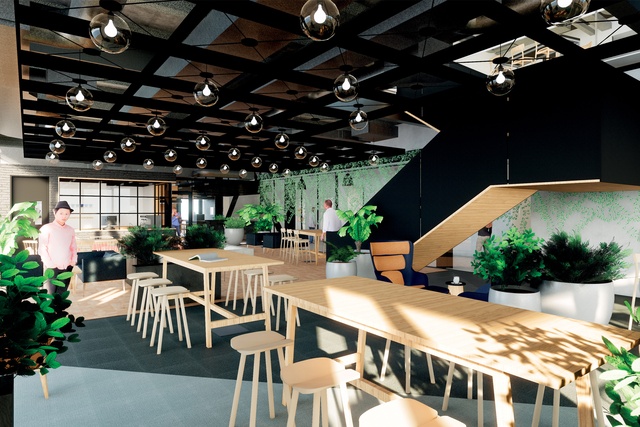
Q&A: Tim Stephens, Digital Innovation Lead at Jasmax
What is your VR set-up at Jasmax?
Tim Stephens (TS): We run an Oculus Rift off a computer set-up with two 5-inch monitors and we have that as a bookable space that our project teams can use.
It is used daily.
How long has Jasmax been using VR?
TS: We started off using a VR-capable laptop three years ago with the Oculus. Our offices in Tauranga, Wellington and Christchurch now have VR-capable laptops and the main VR work set-up is in the office here in Auckland. We still use the laptop for teams who need to take it off site and deliver that experience to clients.
Who uses it?
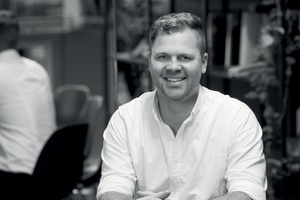
TS: When I was first looking at the tech three years ago, it was to be used for client presentation but, interestingly, it’s probably used 80–90 per cent of the time by project teams internally. We learned that its value for us was as a design tool more than as a presentation device.
Saying that, architects and designers have only certain mediums to communicate their designs to the client or layperson and, with sections, plans, elevations, static renders and perspectives, there is always a risk of misinterpretation.
We say VR is the common ground between the designer and the client. If everyone has experienced the design in the goggles then everyone has experienced it in the same way. If you put a floor plan in front of the client, they may interpret it differently from the way the designer did.
Do you think it’s possible to rely too heavily on the technology?
TS: No; I think it speeds up the design process as you can test something and prove it, and move on to the next design problem. A while ago, we were looking at building bus shelters and we had these two heights; as a designer, you’re trying to appreciate scale and proportion.
We were worried the lower canopy would feel too low and the higher one would feel like it was not giving enough protection. We could skip between the two heights with the goggles on and it was immediately obvious the lower height gave the most protection and the higher one felt too exposed. We were able to run that by a few team members in the office and it was agreed and we were on to the next design problem.
Any pitfalls?
TS: It’s important to make sure people are properly sitting down for the first go and have enough space around them so they don’t knock a monitor over with the hand controllers while they are swinging around pointing at something.
You do have to control the conversation. If we show a client a design in the early phases of the project, we limit the use of materials, because we are trying to show them scale and mass and proportion and they can get bogged down in the details.
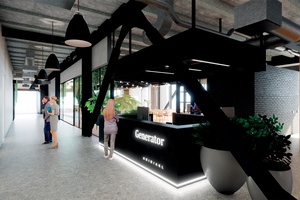
You’ll have them say they don’t like the colour or the concrete, whereas you’re showing them the broader stroke of the design. As designers, you have to curate the content to manage the experience. We don’t want to present something too finished too early in the piece.
What are you hoping will happen in terms of the technology developing?
TS: A big win for us will be multi-user VR experiences. Right now, it’s very much a one-person show. Also, we hope to be able to design from within the goggles. At the moment, we are driving the experience through our software packages. We can make changes while someone is in the goggles but we can’t manipulate inside the virtual environment.
That is not meaningfully here yet. There are programmes hinting at that but we need that capability for our core modelling software. Has it replaced the 3D model? The 3D model was only ever communicated in 2D anyway on a screen so it has finally made it truly three dimensional. You could 3D-print it but VR supersedes that; what is the point in printing something at a 1:100 scale when you can walk around it at a 1:1 scale and actually experience it?
Read part one of this series here.

